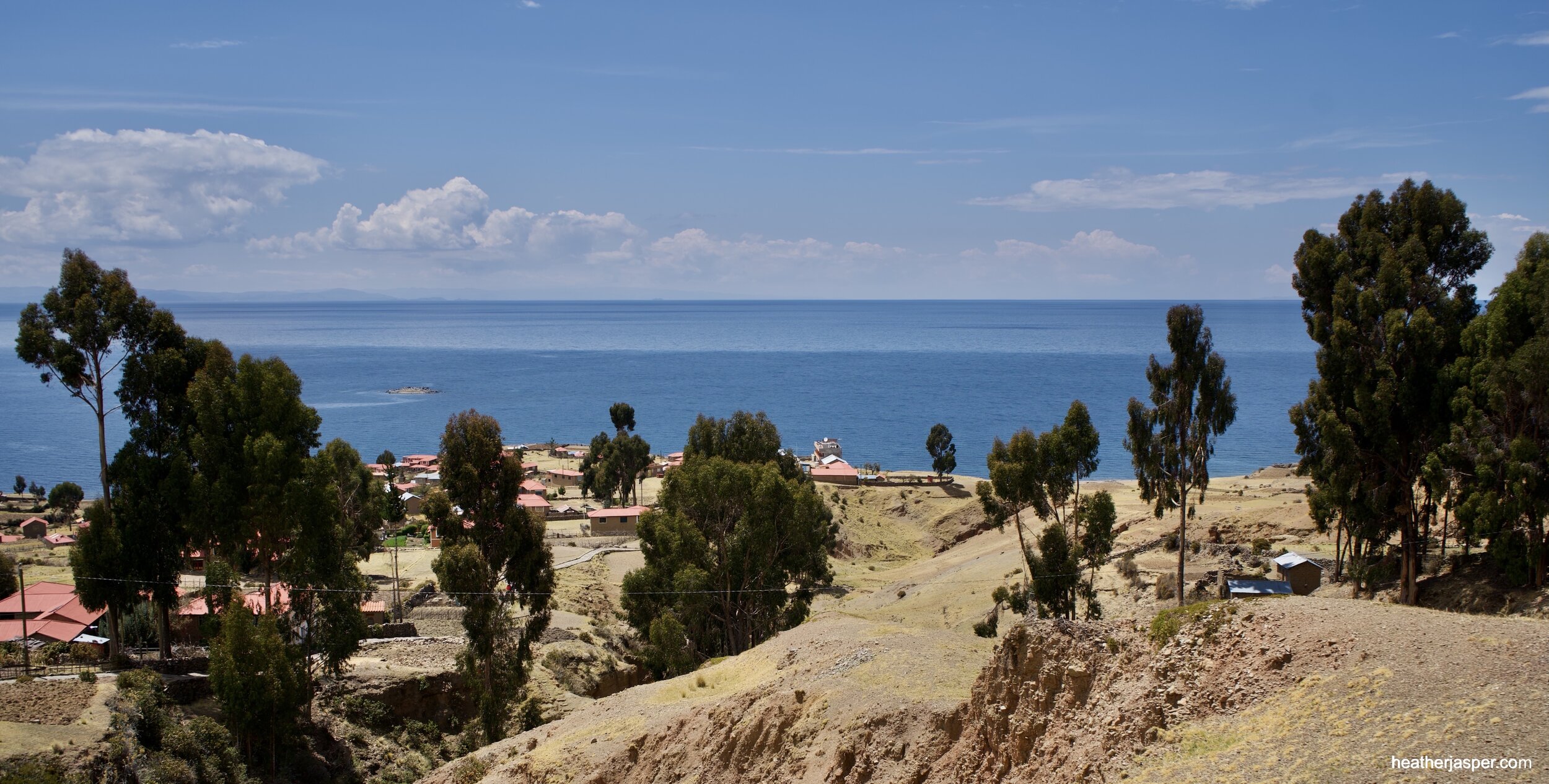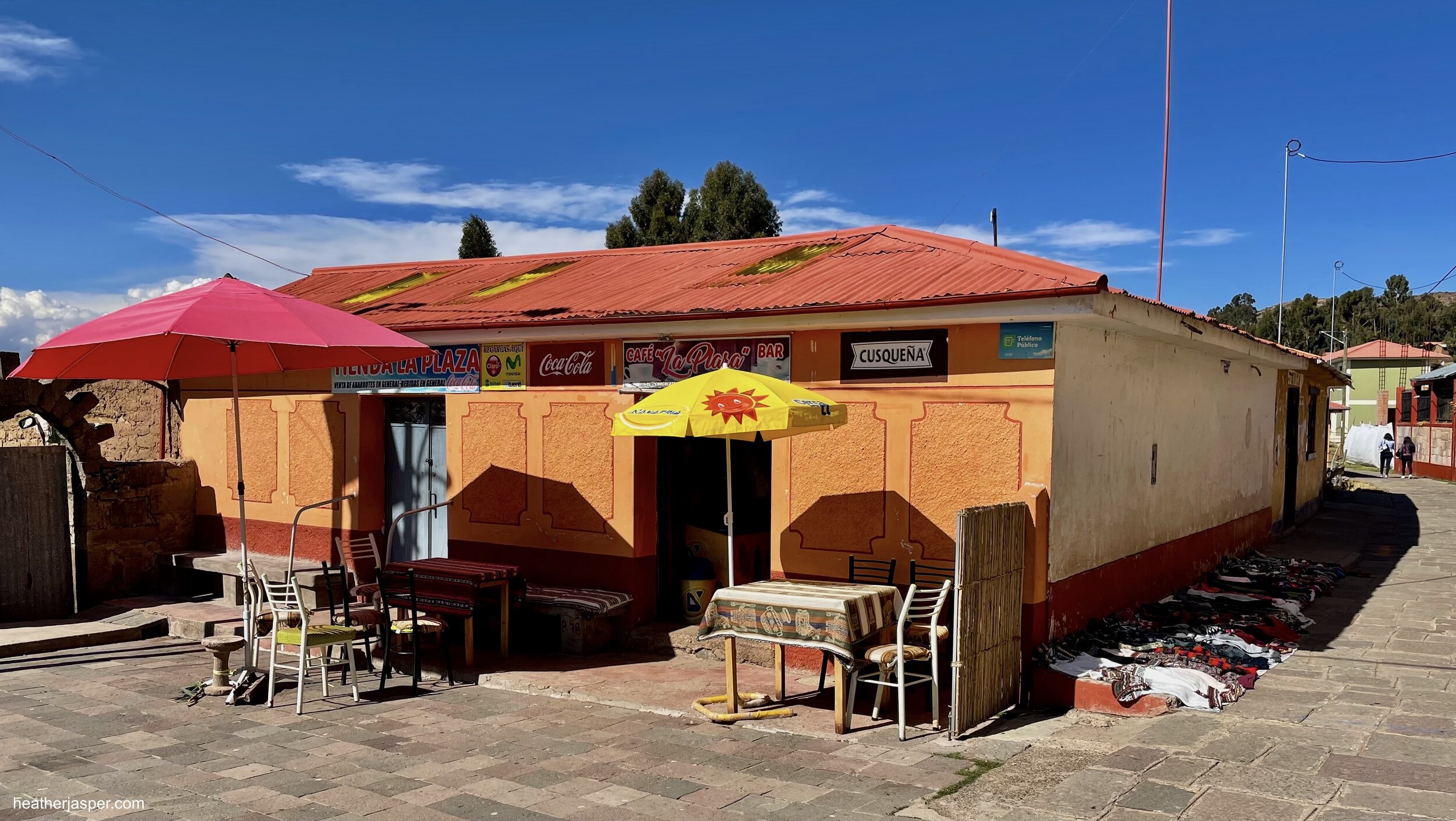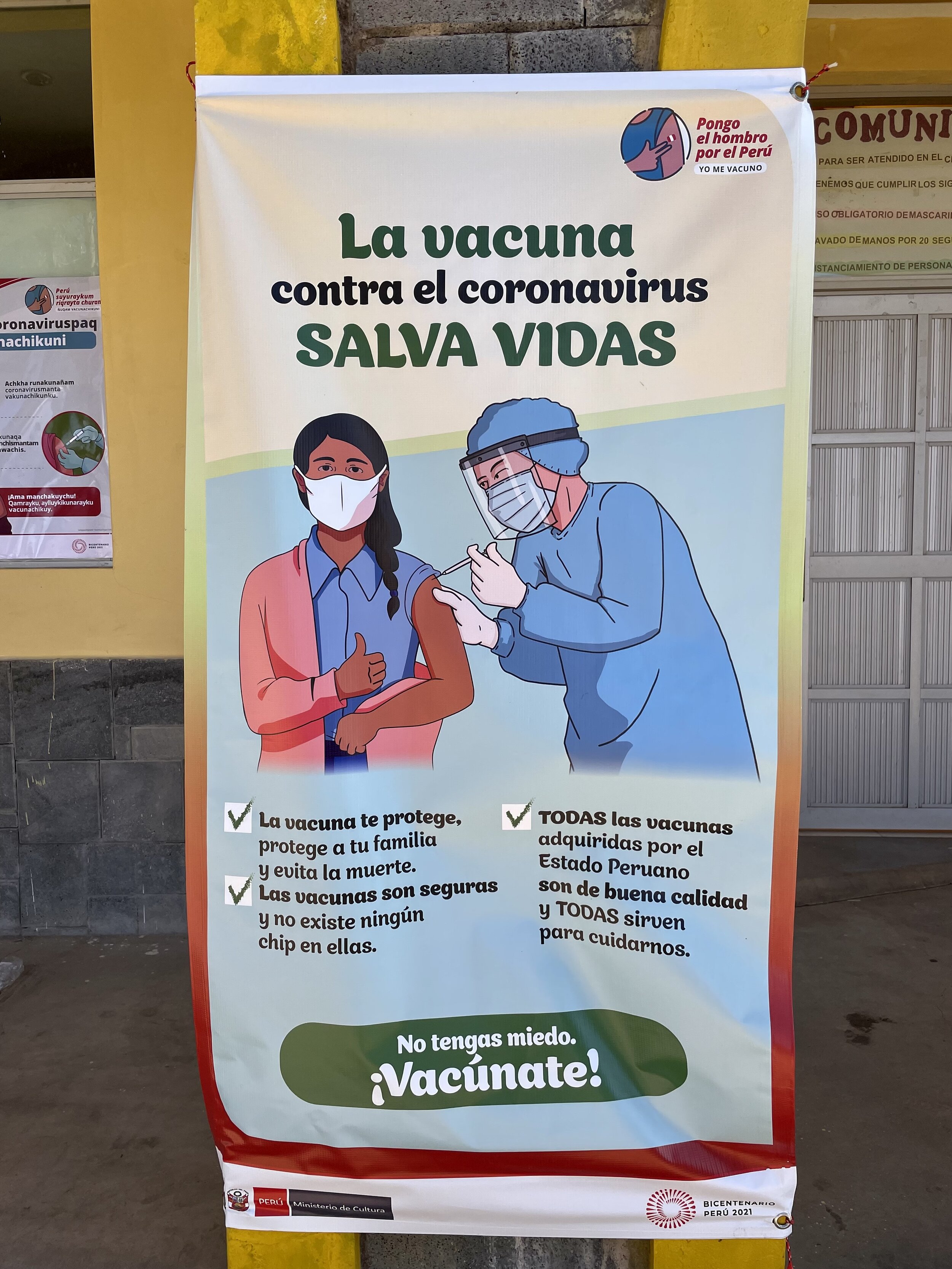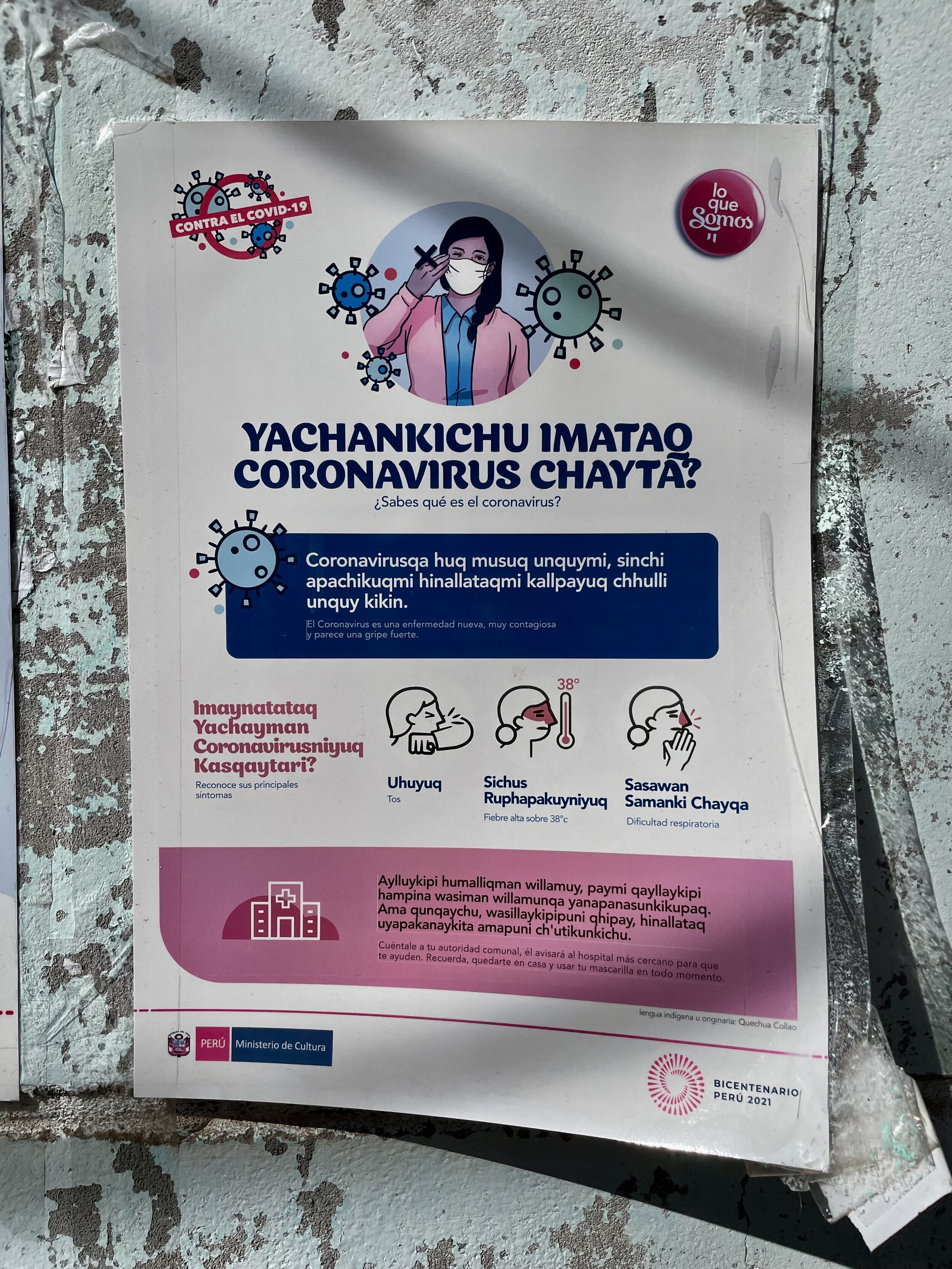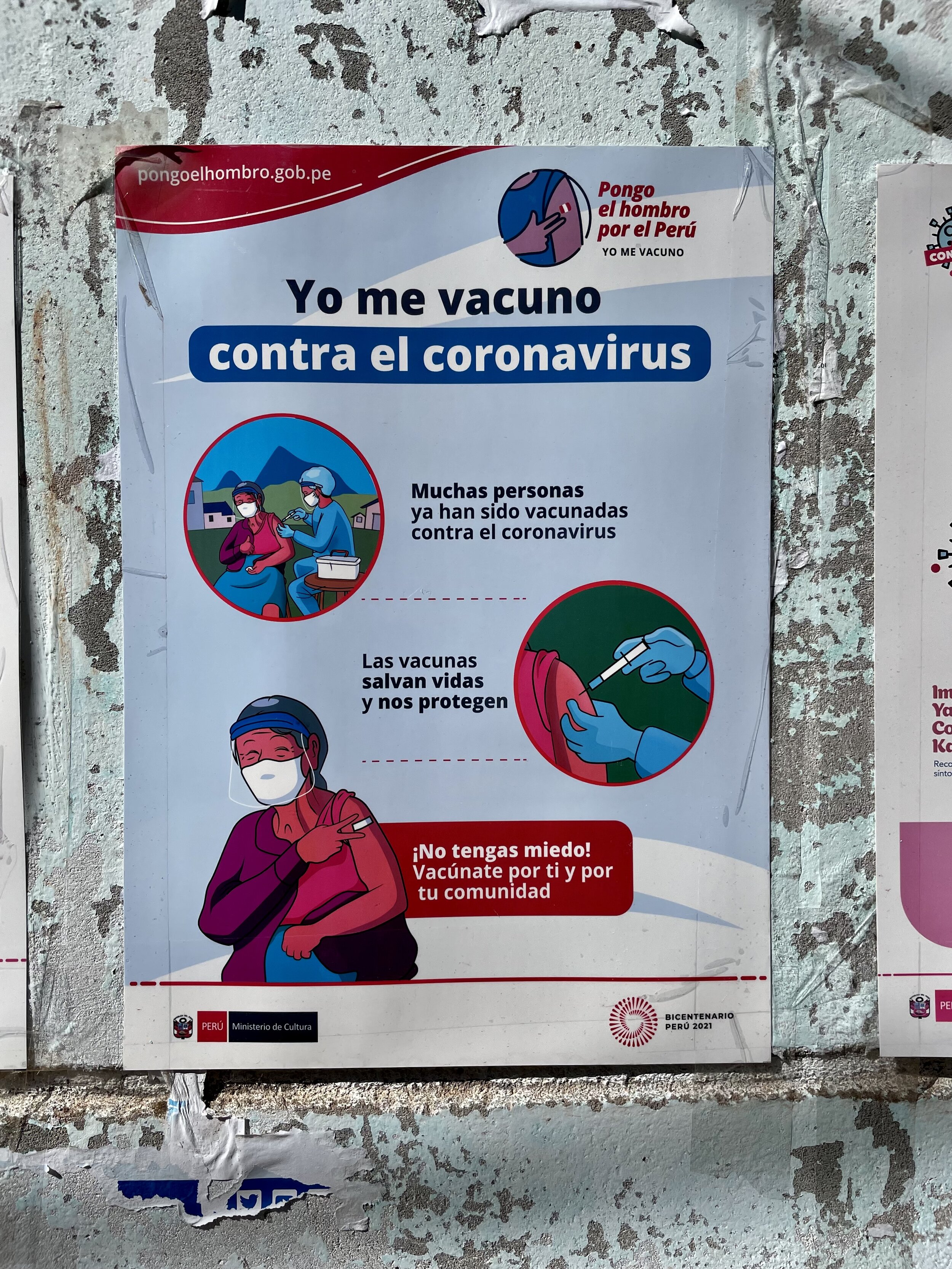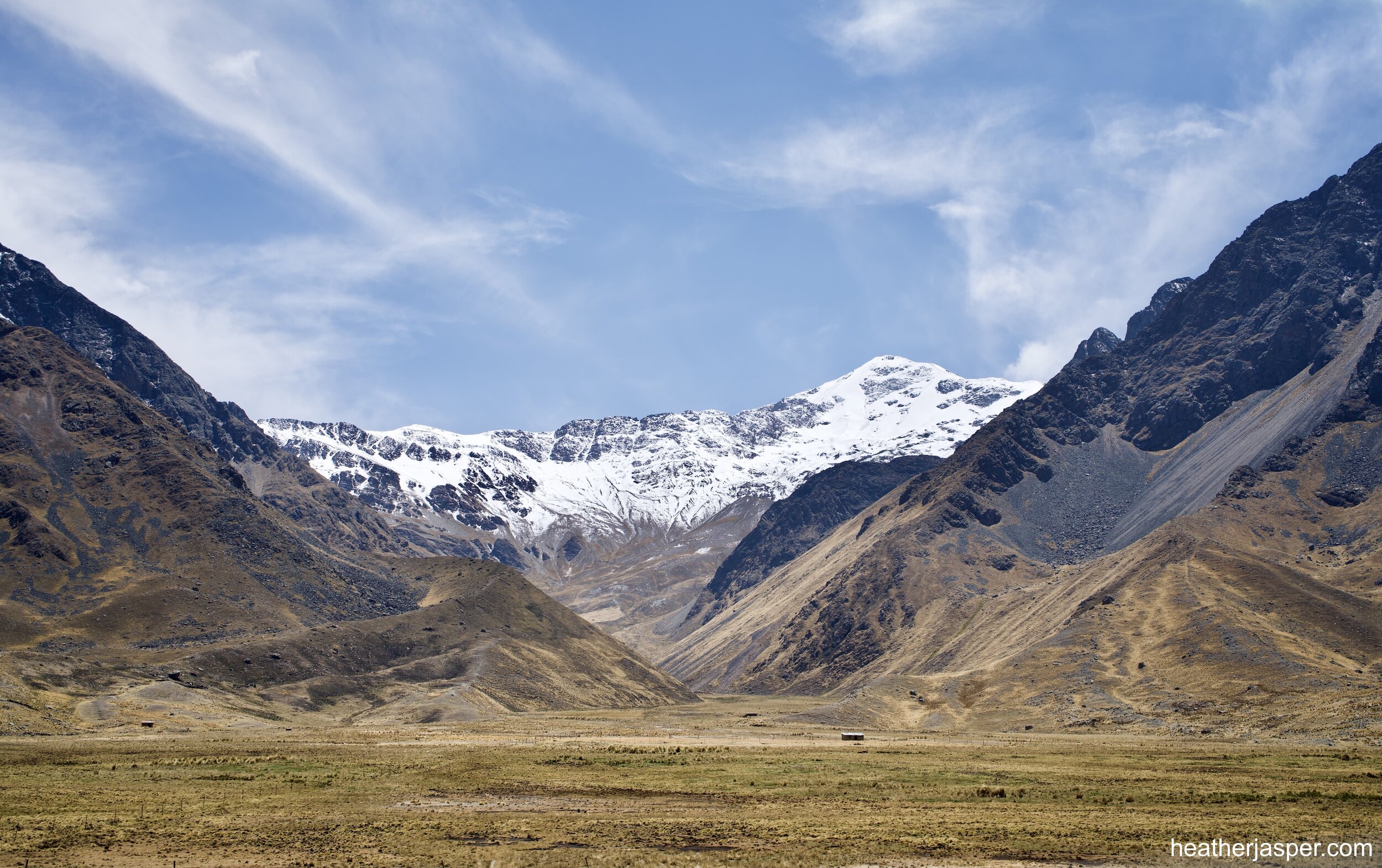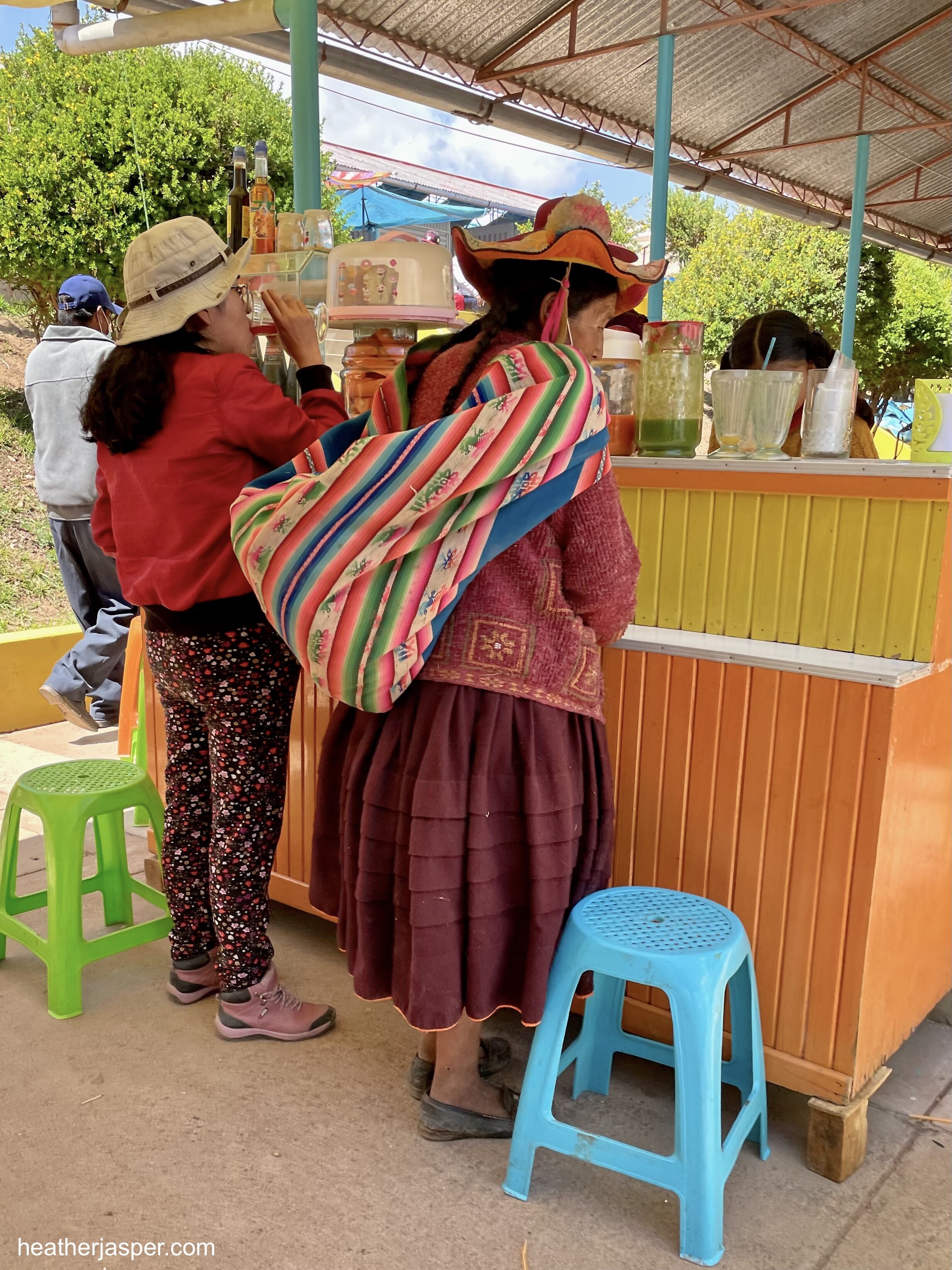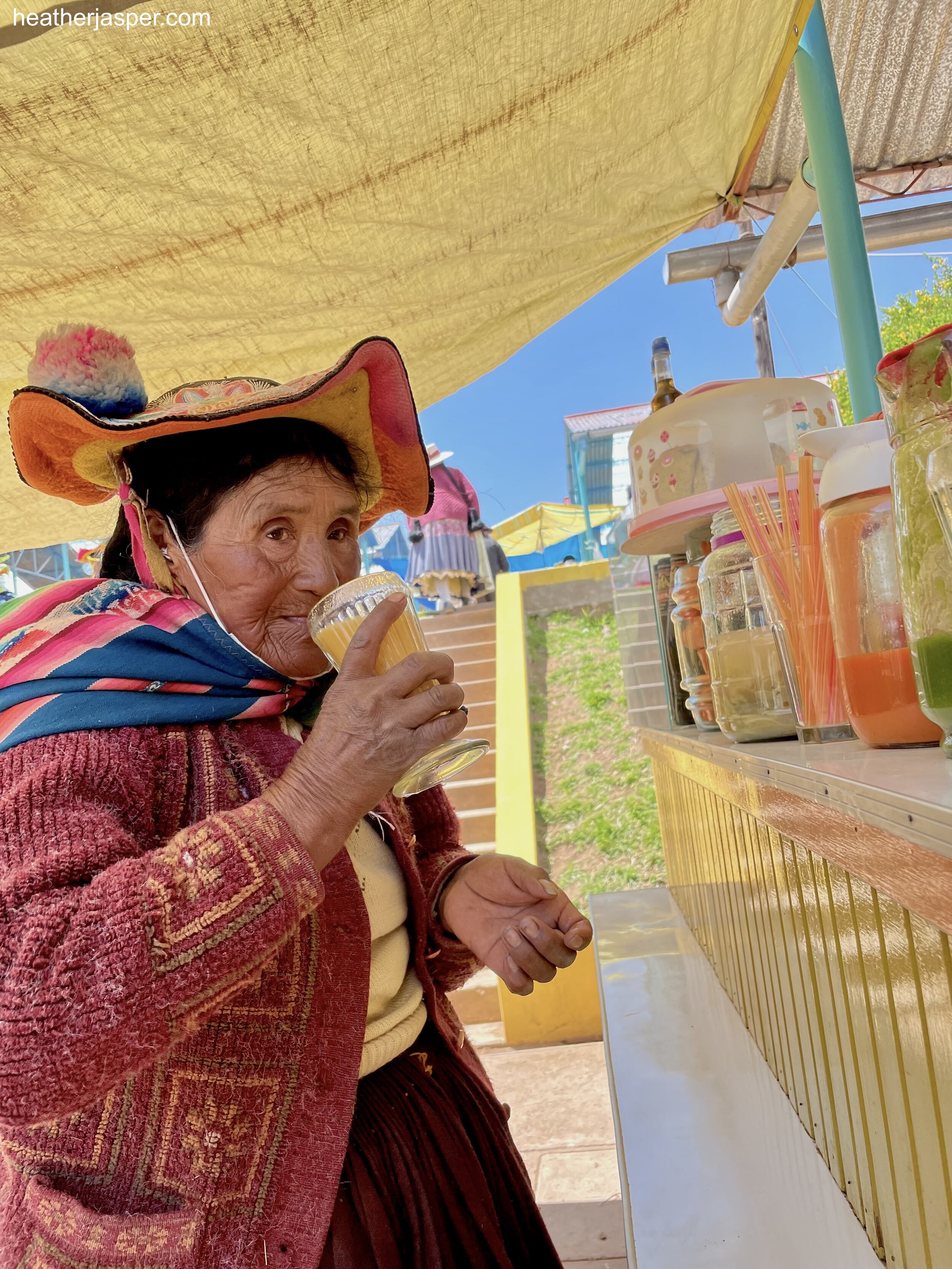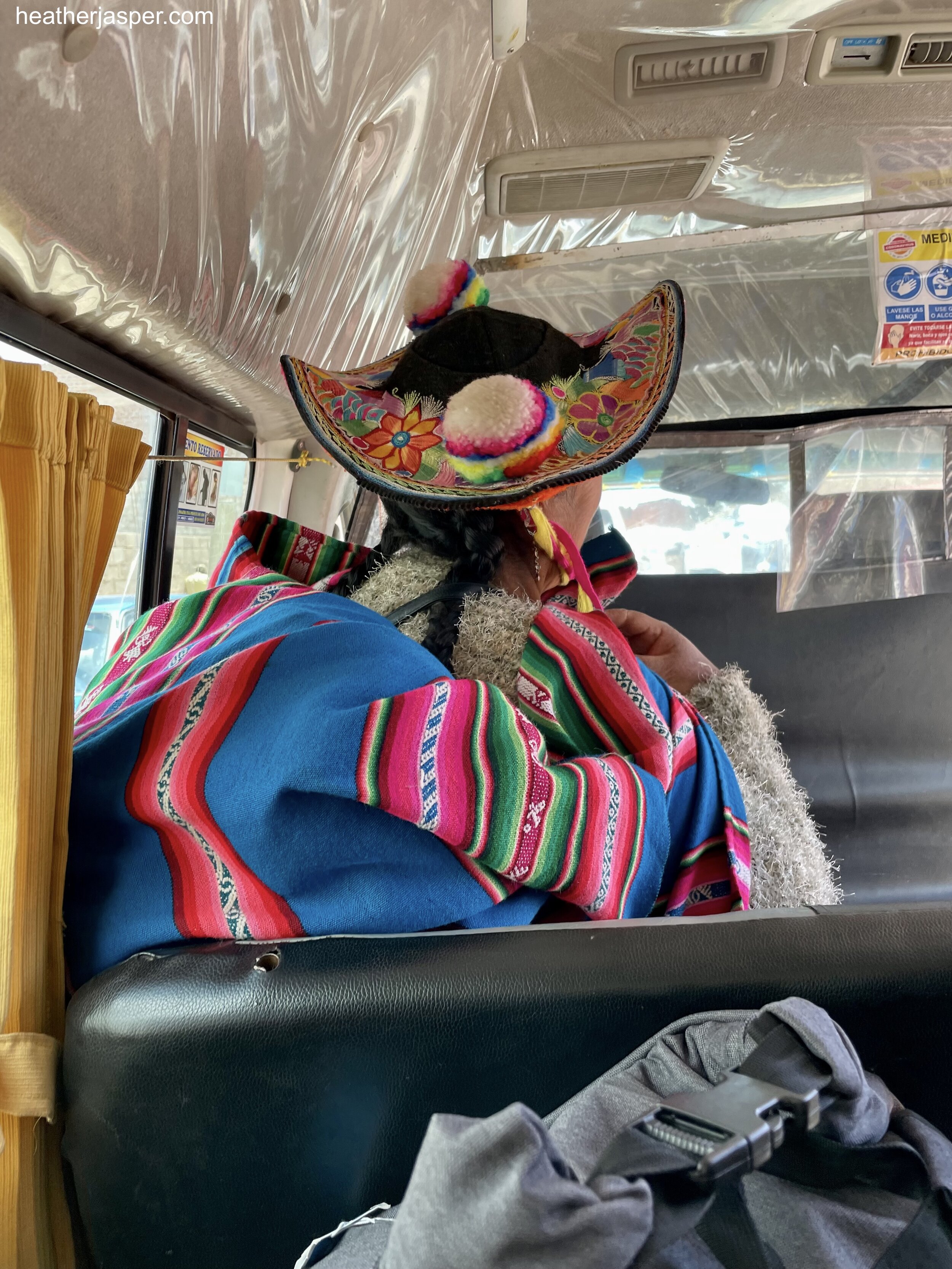Return to Amantaní
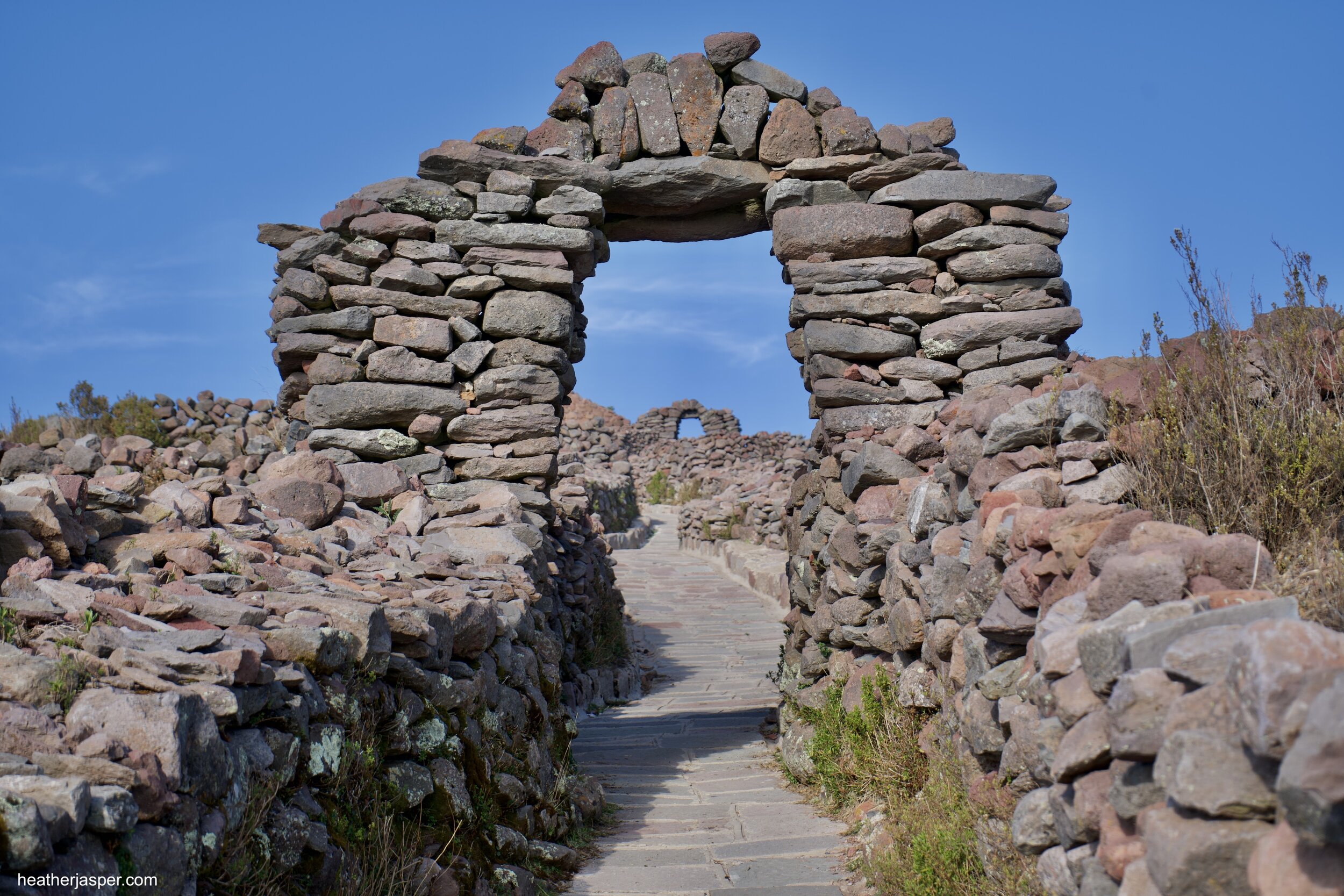
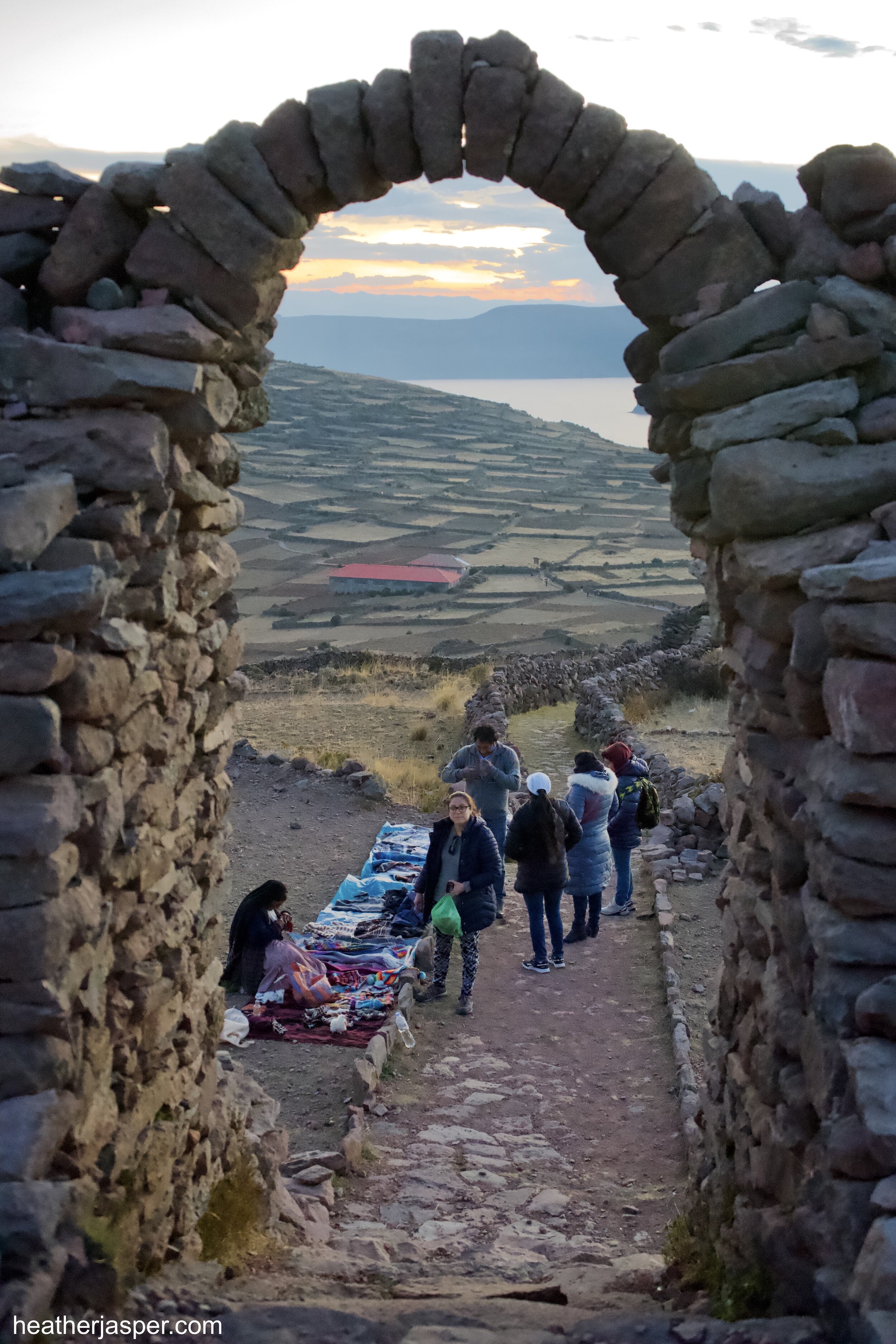
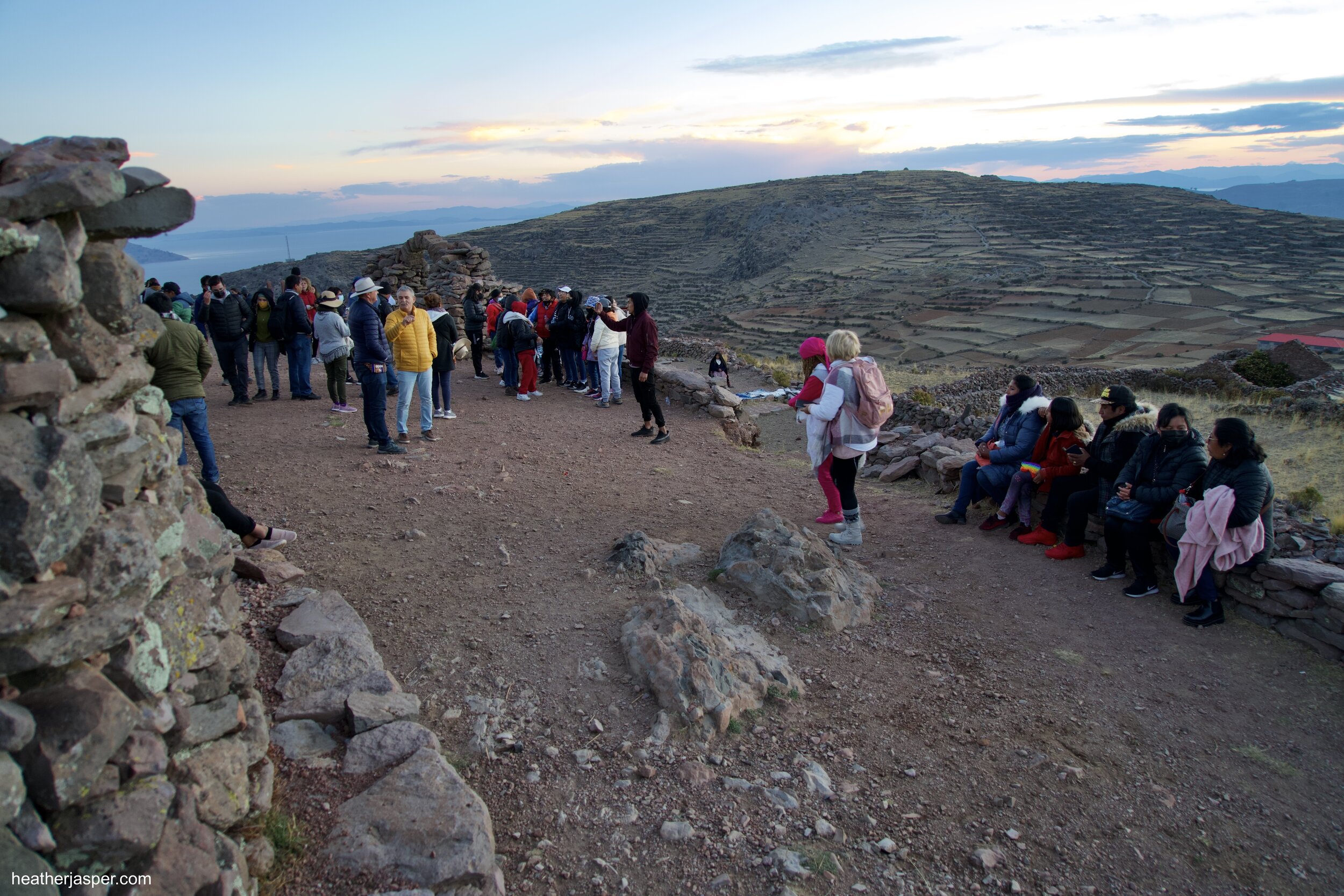
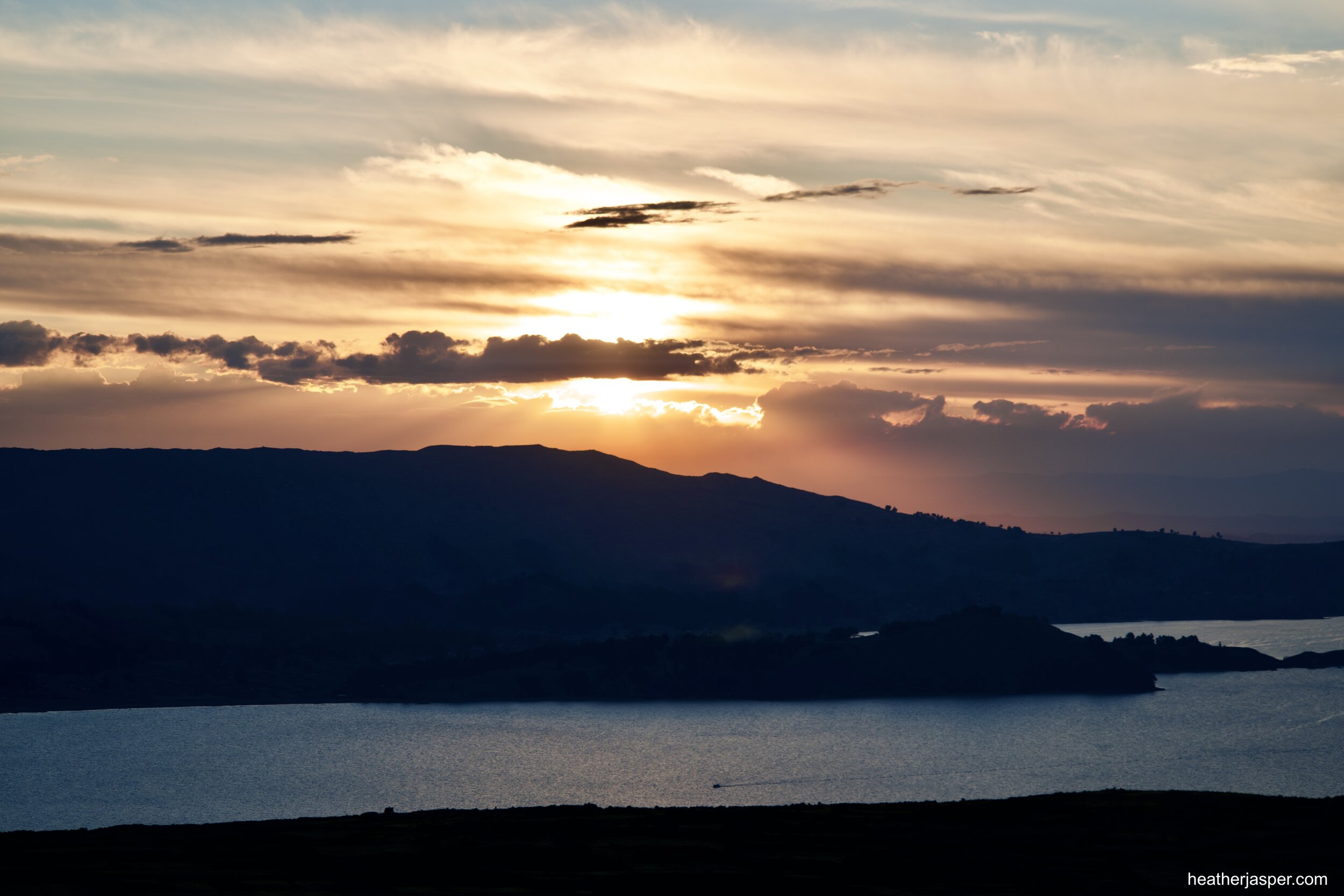
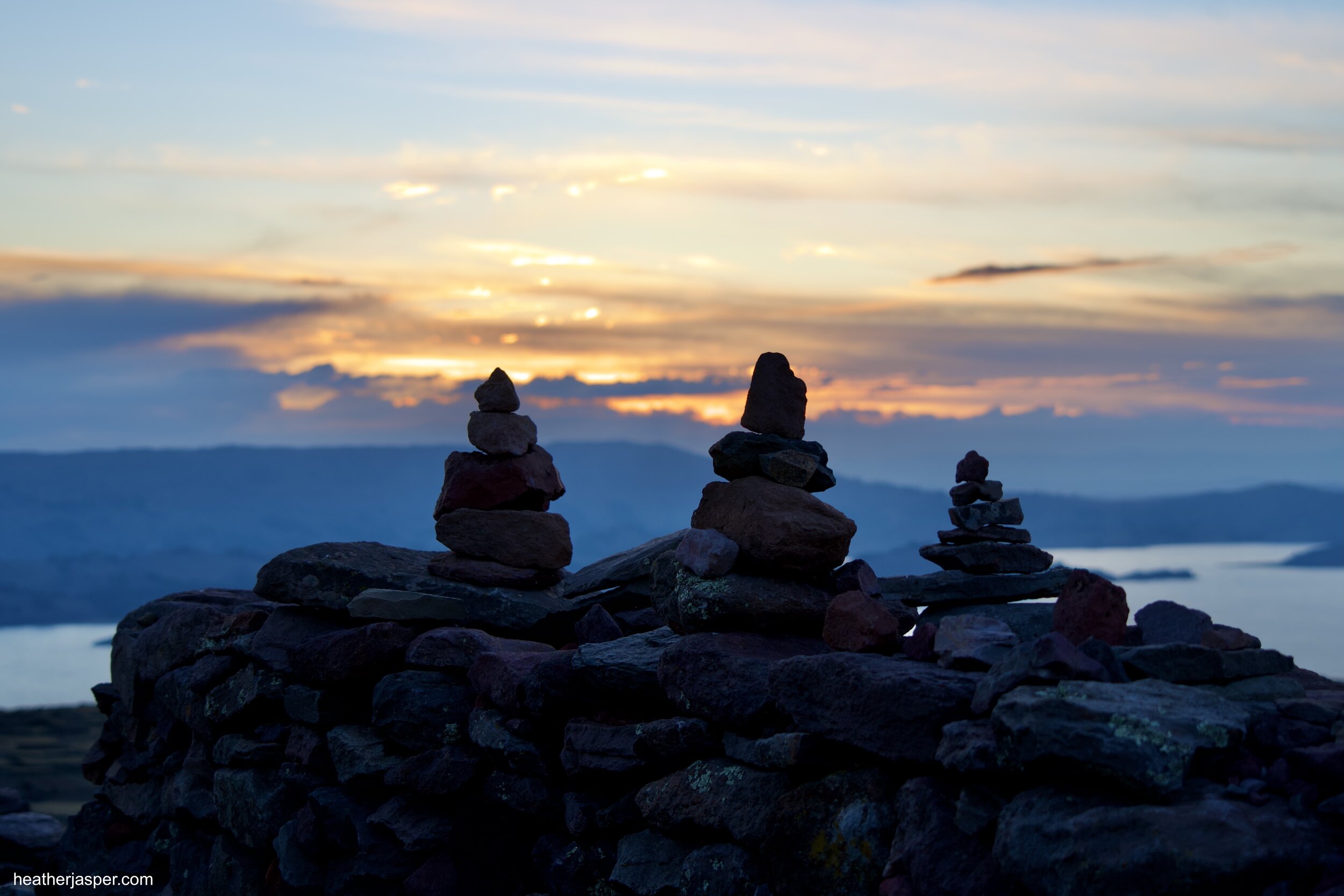
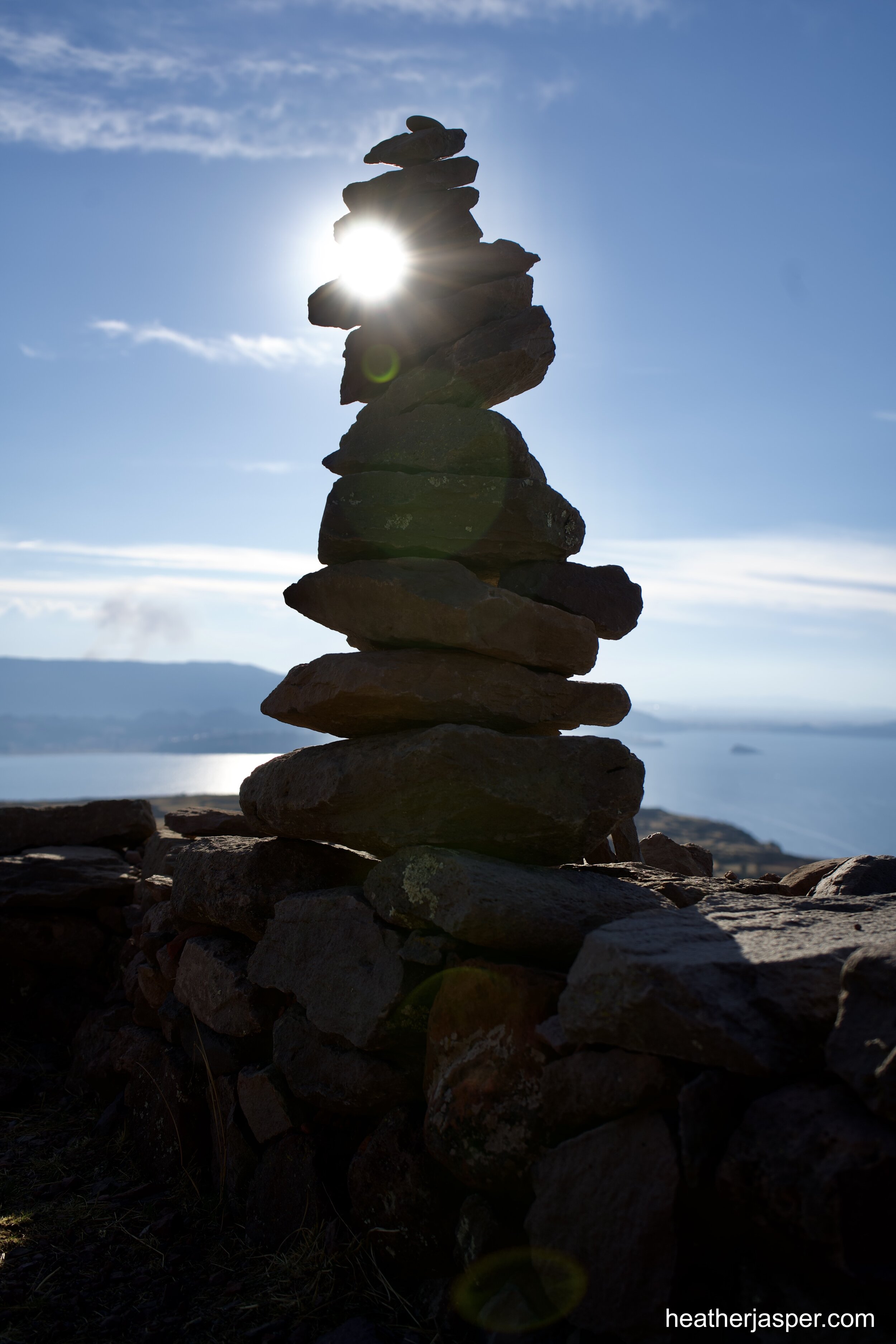

After my article about Amantaní Island was published in Fodor’s, I decided to go back to the island to see what the impact has been so far. If you haven’t read the article, check it out first. This follow-up story will make a lot more sense afterwards. I went for a quick weekend trip and despite how long it takes to get to the island, I went there on Friday and came back to Cusco on Sunday. (Detailed instructions for how to get to Amantaní are at the end of this blog).
Abel Mamani, as my main source in the Fodor’s article, has so far received pushback from one of the agencies I called out in the article. All Ways Travel sent him a message saying that he should have named names when he explained how travel agencies in Puno take advantage of islanders. Of course, they have no way of knowing if he did or not. All the article tells them is that I didn’t publish names. My interview with Abel was over an hour long and only two sentences of direct quotes were published. I also paraphrased some of what he said, but I was the one who chose not to list one agency as decent and the others as abusive.
To be clear, All Ways Travel has done some good on the island. Unlike other agencies which pay with two or more weeks delay, All Ways Travel usually pays host families on the day that they host tourists in their homes. They have led workshops and lectures for families on the island who host tourists. According to my sources, the topics have been reuse for plastic bottles, information about hosting and recommendations for painting and decorating homes to be more pleasing for tourists.
Still, their message to Abel was accusatory and seemed angry to me. The owner of All Ways Travel lives in the US, which is probably why they were the first to push back against Abel for the article. Fodor’s is an American company and not widely read in Peru. I suspect that the other agencies in Puno haven’t read the article yet, since they’ll probably be just as angry with Abel when they do find out what he said about them.
In the distance, you can see some of Bolivia on the horizon, though the lake is so big that most of Bolivia is too far away to see.
I translated the article into Spanish to take with me to the island, since none of my sources read English very well. Abel and Gerardo both said that they liked what I wrote. When I took a printed copy of the article in Spanish to Gerardo, he asked if I could put his phone number in the article. I explained that the article itself wasn’t written to recommend specific homestays, but to encourage travelers to contact homestays directly without going through agencies. [For those who want to stay at Gerardo’s home, which is comfortable and has a beautiful view of the lake, please text him on WhatsApp +51 968 503 608]
Rustic and authentic
There is a fine line between being authentic and being able to use modern conveniences. Most homes are still built using adobe and most walls are still stone. However, the island did get a solar array brought on line in February, 2020 and most homes have been connected to electricity. The timing couldn’t have been better, since everything stopped in March, 2020 for the pandemic. If the project had been delayed any longer, the island would likely still be without power.
Now for the real dirt that I couldn’t publish in Fodor’s because I don’t have documented evidence. The abuses listed in the article are ones that I can prove. What follows here is what people on the island have told me, but for which I don’t have concrete evidence. I’m only including accusations which I believe are credible considering who they come from and what I have seen with my own eyes on the island.
#1 Agencies don’t pay guides
Of all of the crazy parts of this story, this one is the most incredible to me. There is apparently such a surplus of guides in Puno that agencies can hire guides without paying them. They promise to give a guide a certain number of days per month or per year, saying that the salary can be made up in tips. Living off tips might work for some guides, but most end up taking the money that should go to the host families. As I explained in the Fodor’s article, the islanders have organized for a set rate per person, per night.
When a guide takes part or all of the money that should have gone to the family who is hosting the tourists in their home, they often tell the family to make up the difference by selling souvenirs or drinks. Every night communities host parties after dinner for tourists, which include traditional music and dances. The families also are supposed to provide traditional outfits for the tourists to wear for photos or even for the whole party. At the party, guides tell islanders to sell beer or other drinks at a high markup.
Guides also tell tourists all kinds of things to get them to buy souvenirs from the families. I’ve even heard of guides telling tourists that the money goes directly to children’s education or some other worthy cause. In reality, it goes to covering the cost of hosting people, since the payment for that is taken by the guides. Since they’re not being paid, guides don’t pay for their room and board. They expect to be housed and fed just like the tourists, but they won’t pay for the services, and neither will the tour agency.
The monopoly of four agencies in Puno makes this possible. Opening up competition is difficult because the monopoly centers around the control of boat traffic to the islands. Amantaní is not the only island that tourists visit, but it is the only one with direct ferries from the town of Capachica. Boats from Puno, which has direct bus and train service from Cusco, are owned by one of these four agencies.
Boats from Capachica
Capachica’s beach area is called Chifron, which is where you go to get a ferry like one of these to the island. A ferry is the most direct and quickest way to get to Amantaní.
#2 Agencies don’t pay islanders who host travelers
Before Abel was president of tourism, it was common for the agencies to require people to go to Puno to be paid for the tourists that they host. Abel managed to make them bring the payment to the island, but now that he’s not president anymore I don’t know if that will continue.
Of all the stories I have heard about how the agencies take advantage of people, this one actually made me the angriest. Not only did agencies require that islanders go to Puno for payment (the trip takes at least two hours, one way) but they often left people waiting at the doorstep all day. Sometimes they would tell people to come back the next day. Few islanders have family or friends in Puno and none of them can afford a hotel there. They would end up sleeping in the doorway of the tour agency, waiting to be paid the next day. The level of disrespect that it takes to do this to a person makes my blood boil.
As one of my sources said in the article, often agencies delayed paying a family for so long that they “forgot” that they owed the family anything. Families didn’t used to have phones to take pictures of tourists or any other concrete way to prove how many tourists they had hosted. Everybody I spoke with said that they were often not paid for all of the tourists they hosted. The guide would keep some of the money or the agency would pay half and say that they would pay the rest later – but then never pay the other half.
Everybody who spoke with me for the Fodor’s article said that they had problems with the agencies not paying them, but didn’t know what to do about it. Abel tried to solve some of those problems but it’s too big of a job for one person, especially when that job is unpaid.
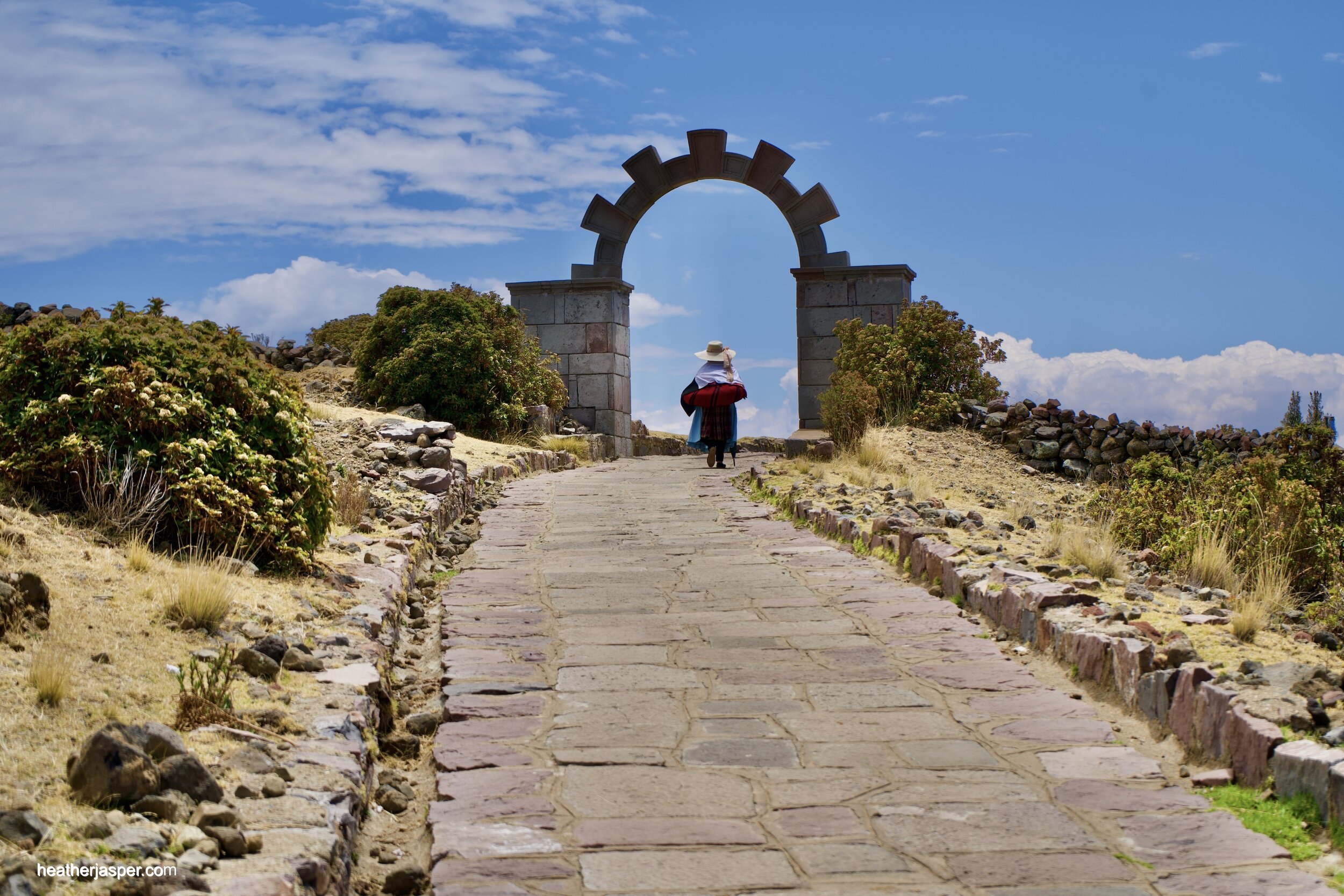
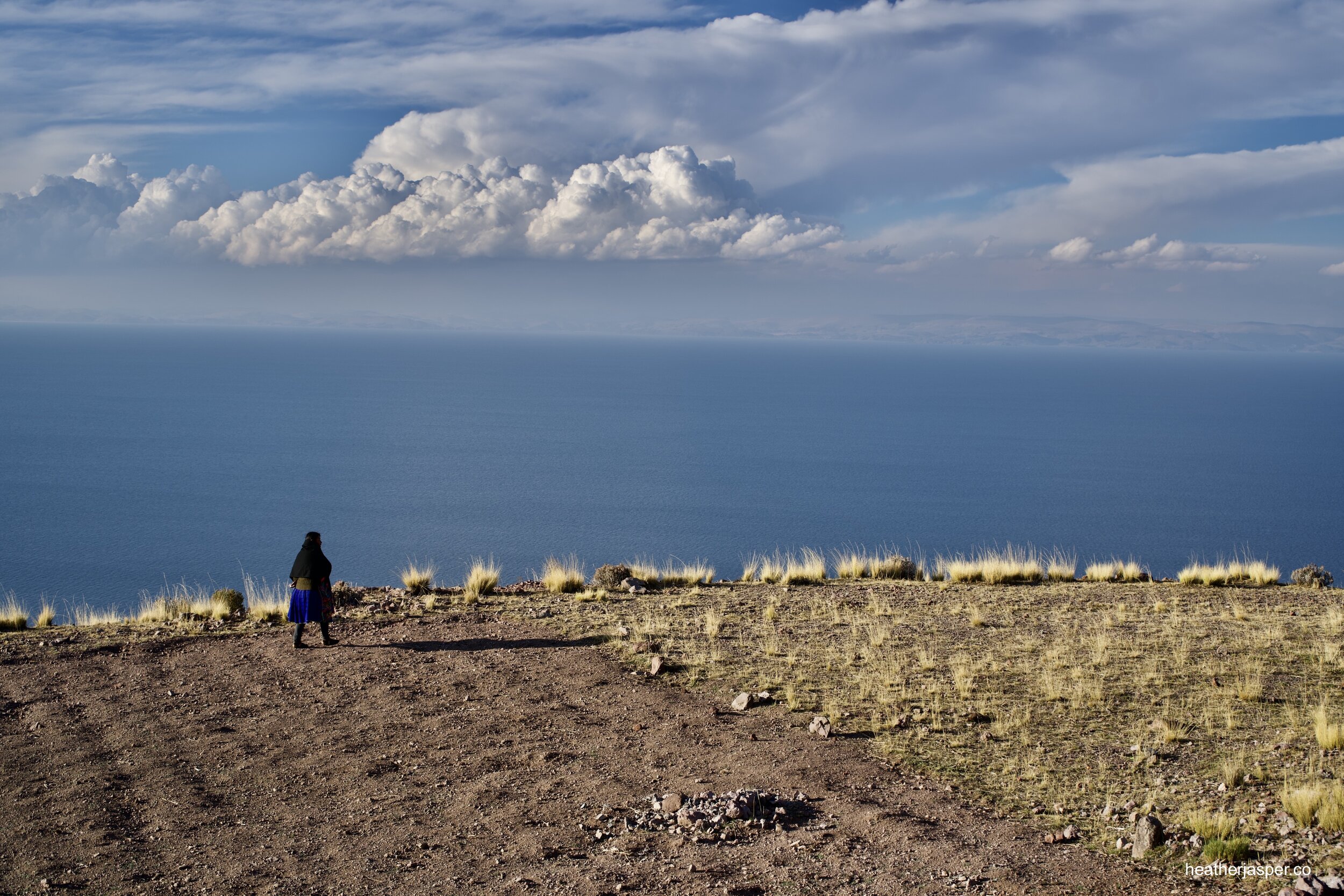
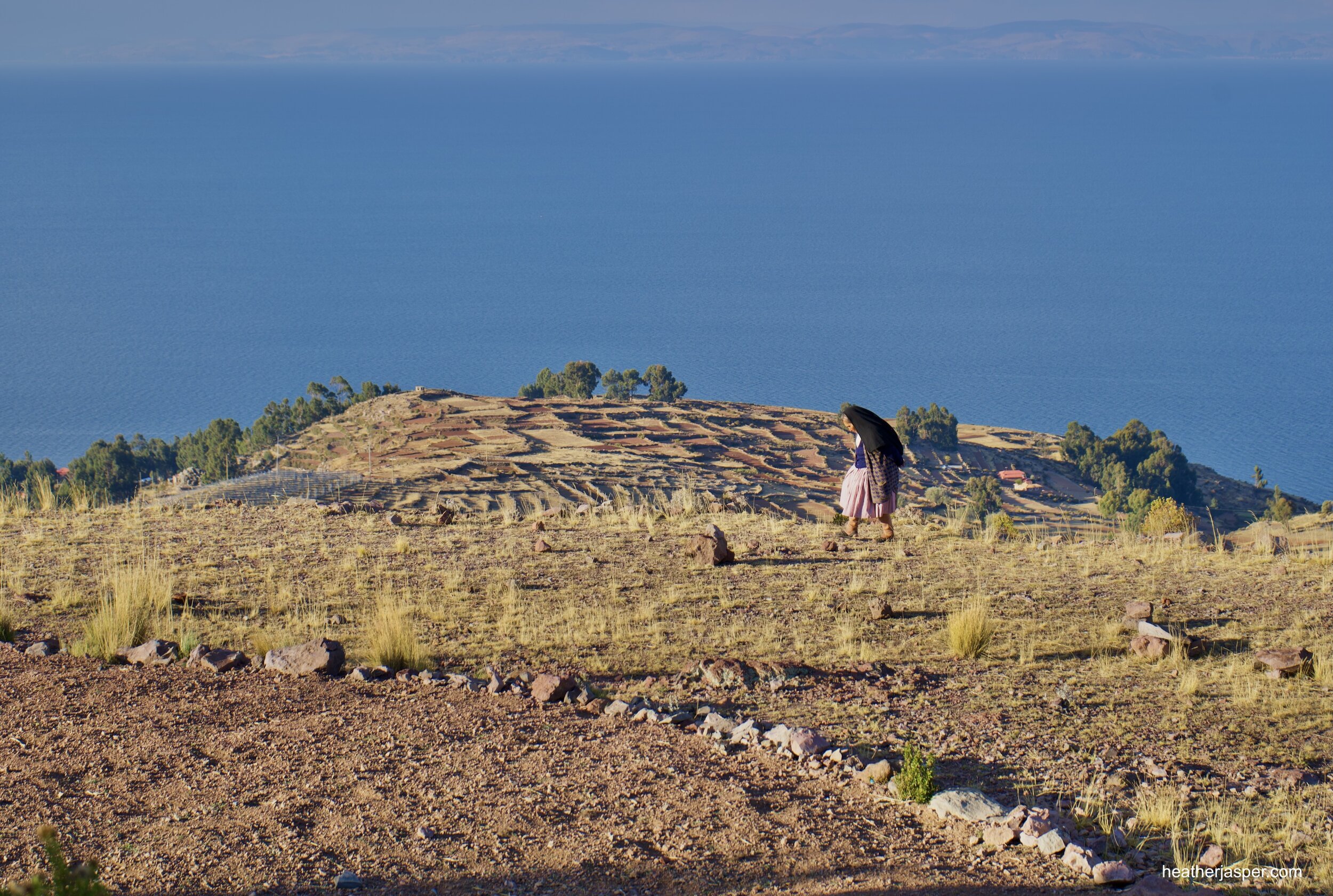
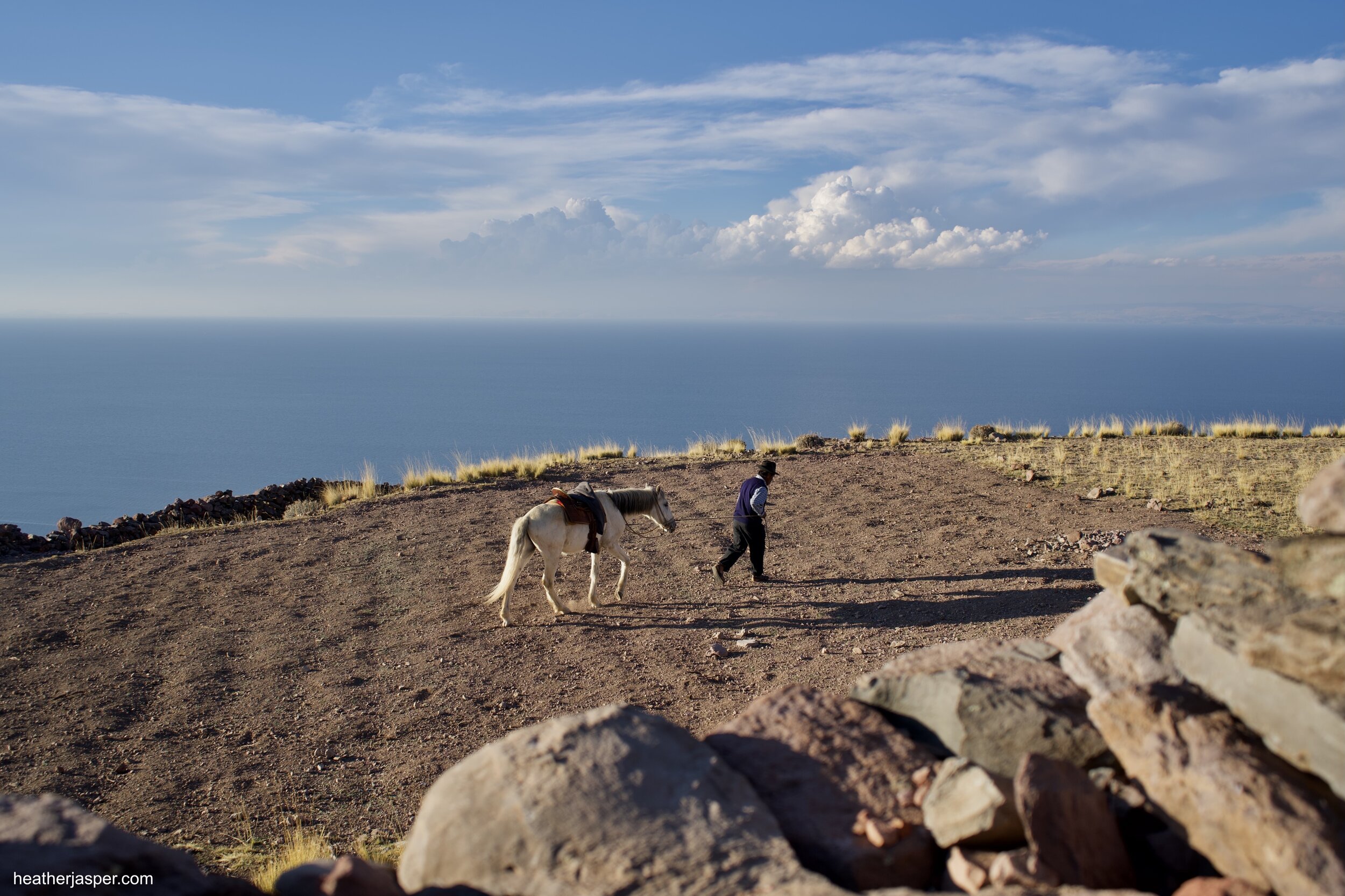
#3 Agencies are directly responsible for the decrease of livestock on the island
One of the ways that agencies have avoided paying families is by complaining about the livestock they have. After a family hosts travelers in their home, the agency would later say that the tourists were woken up early by the roosters or the donkey. If the family had a pig or sheep, they would say that the guests were bothered by the smell. If the family had cuy (guinea pigs), they would say that the guests were afraid of the cuy or that they thought it made the home dirty. Each time, the agency would refuse to pay the family, so families started to get rid of their livestock. The ripple effects of this are wider than you might expect.
When a family sells their donkey, they no longer have an animal that can carry anything for them. Families on Amantaní have small plots of land called chacras, which can be up to an hour’s walk from their home. (The island is divided into four quarters, called suyu, which are used to create a crop rotation system. Papasuyu is for growing potatoes, ocasuyu is for another tuber called oca, ciwarasuyu is for corn, quinoa, barley and other grains. The fourth suyu is called wasara and it’s for grazing animals and letting the land rest. Having a small chacra in each of the suyu guarantees a family the ability to farm all four quarters of the rotation). Without a donkey, all faming tools and harvest must be carried on their own backs – unless they buy a motorcycle.
Three women pull while a man guides the plow to ready their land for planting. Rainy season is about to start and the people of Amantaní have to be ready..
Motorcycles are increasingly common in the island. This does ruin part of the idyllic island life that tourists come for but more importantly, it makes families more dependent on cash. Trade is still common amongst islanders but buying a motorcycle and then the fuel to fill it creates a need for cash. Unless a person leaves the island to find work on the mainland, the only way to earn money is through tourism. Thus, selling a donkey and buying a motorcycle makes a family even more dependent on the tour agencies.
When a family sells their sheep, they lose the income from the wool and the fertilizer that the sheep provide to their chacras that are in the wasara suyu that particular rotation. Besides hosting travelers in their homes, most islanders knit sweaters, scarves and other clothing to sell to visitors on the island. Without sheep, they must buy yarn from off-island, which is usually synthetic. Thus, the souvenirs that they sell are less authentic and islanders are again dependent on having cash to buy yarn.
The loss of fertilizer is just as bad. The island has been inhabited for thousands of years and even if a field is allowed to go fallow every three years, soil depletion is a major issue. All of the islanders I have spoken with are adamant that they will not buy chemical fertilizers, but they do have to buy fertilizer of some sort. What ends up happening is that they take the boat to the mainland and buy sheep dung from farmers there to bring back to the island. The ferry fare and the purchased fertilizer creates yet another need for cash.
Without chickens and cuy, few families have any source of meat in their diet. Sheep are not eaten on the island and even those who have chickens and cuy only kill them for special occasions like birthdays and holidays. Most families on the island eat what they can grow: potatoes, oca, corn and quinoa. They buy vegetables like green beans and tomatoes from the mainland. Even carrots and onions, which could probably be grown on the island, are bought. I have walked all over Amantaní several times and I have yet to see a field that wasn’t one of the crops that are delineated in the suyu rotation.
Don Guillermo’s café & bar
Though there are ten communities on the island, there is only one plaza and only one bar. Don Guillermo makes the best té macho that I’ve ever had. It’s a big mug of pisco and hot water with coca leaves, eucalyptus leaves and muña. A kind of mint, muña grows wild all over the island. It has tiny leaves and a distinctive earthiness, which makes it very unique among mints.
The plaza is much more lively in the evenings, when people come home from the fields and can hang out with their friends and relatives.
As if there weren’t enough problems on the island, they also have a pandemic to contend with.
When Peru went into lockdown on March 16th, 2020, the island was cut off entirely. Food supplies ran low and many families were desperate. There are no banks or government services on the island. Since Peru has several islands on Lake Titicaca, there is a boat that combines many government services with banks. When the government boat visits the island, a person can get their pension payment, get a birth certificate for anybody born since the last boat visit, withdraw cash from most banks and get healthcare not available on the island. When the boat first visited after the pandemic started, islanders were required to have a rapid Covid test done before they could board the boat. About 80% of islanders tested positive for Covid, though everybody I spoke with said that nobody had felt sick. Healthcare workers suggested that perhaps the batch of tests they had brought had a high rate of false positives. They visited again a week later with the more accurate molecular test, which again showed 80% of island residents had been infected by Covid. The high incidence of asymptomatic cases could be explained by their general good health and a NIH study done about the effect of high altitude on Covid cases. Whatever the reason, many islanders have been left thinking that something fishy is going on. When the government boat came back with the vaccine, most people were highly suspicious and several people I spoke with said that they stayed in their fields all day to avoid town and any healthcare workers who might be waiting for them.
How to get to Amantaní from Cusco
Near the Óvalo Pachacutec in Cusco there are several small offices which sell seats in all sizes of cars and vans to the town of Juliaca. Prices vary between s/35 and s/65, depending on the size of the vehicle and how many people are in it. The drive to Juliaca is about five hours and much more comfortable in a small car because it’s easier to ask the driver to stop along the way for breaks. In Juliaca you have to get a taxi across town, since the place where you arrive from Cusco is quite far from the place where you get a van to Capachica. You can get a taxi from Juliaca to Capachica, but the vans run so frequently that I’ve never felt it necessary. In Capachica you need to walk downhill to the lake about twenty minutes, or take a two minute taxi ride. The beach area is called Chifron and it’s where you get the ferry to Amantaní.
After you leave Cusco, estimate about five hours to Juliaca, a half hour in Juliaca to get to the vans for Capachica, another half hour in the van, about half an hour in Capachica since I’ve never been lucky enough to arrive right when a ferry was leaving and another half hour on the boat to the island. That makes it a seven hour trip, if all goes well. Of course, you can rent a car in Cusco and get there more quickly, but then you have to find a safe place to leave the car parked while you’re on the island. I was so tired by the transportation this time that I’ll be tempted to rent a car next time. If I do, I’ll update the blog with information on how well that works.
The Altiplano
The drive from Cusco to Juliaca takes you across some beautiful sections of the Andes. These high altitude plains and prairies are called the Altiplano. You also go through areas with lots of cattle, where you can buy fresh cheese and yoghurt from roadside stands. There is a town with hot springs, predictably called Aguas Calientes. The town of Pukará is known for ceramics and also has lots of roadside stands.
Predictable unpredictability
On the road between Cusco and Juliaca there has been a lot of construction work this year. This particular stop was the worst I’ve been in yet. We were stopped for about an hour and a half, waiting for a pause in the construction so we could get past.
Women from Capachica have the best hats! I’ve learned to recognize hats from Ocongate, Chinchero and the Sacred Valley, but the women in Capachica definitely would win any award for the coolest hats. The women of Amantaní wear long black shawls with bright embroidery, which are beautiful but I still love the Capachica hats more.

